9 plants that can grow on rocks
Create a stunning rock garden with these plants
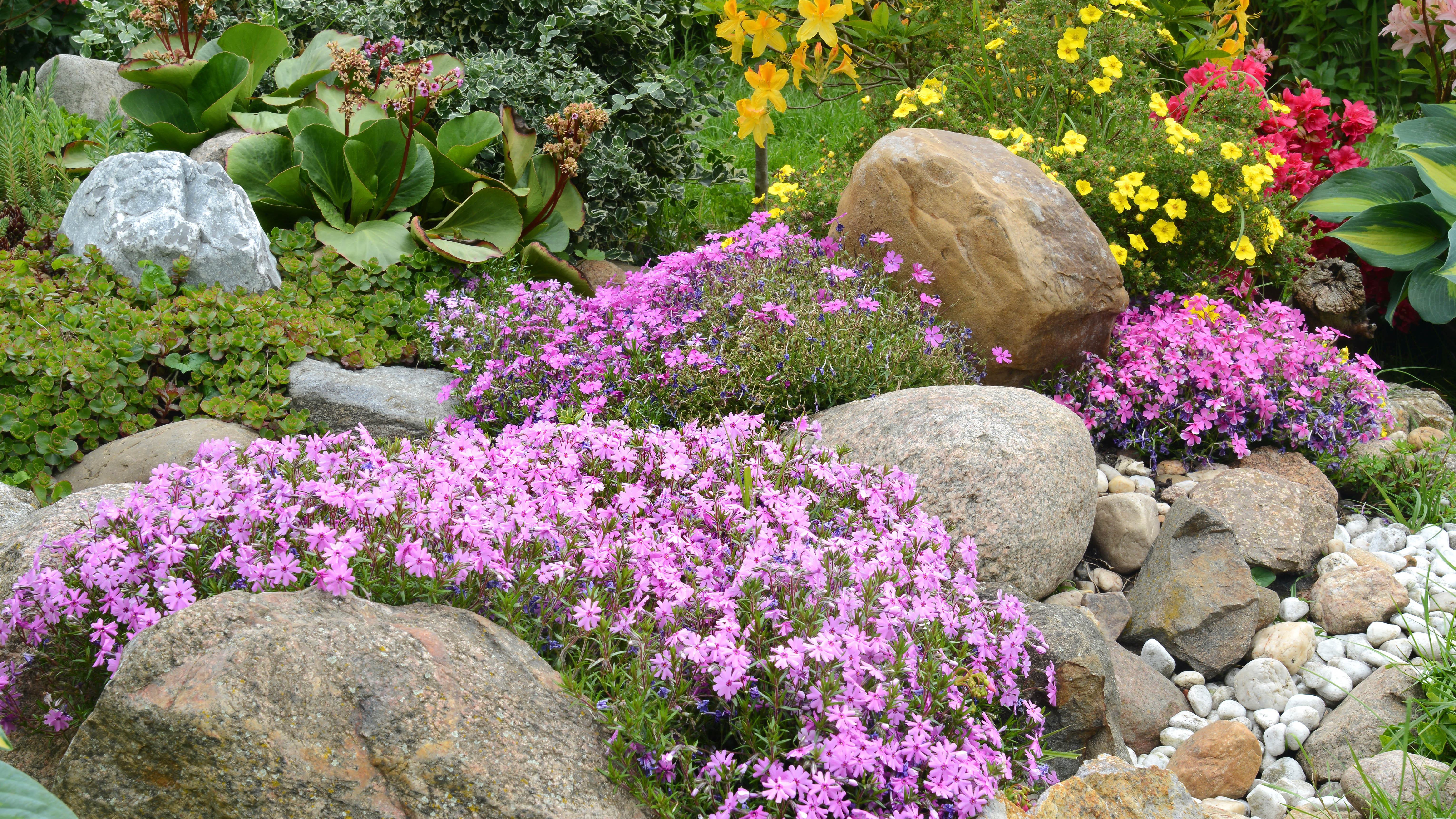
Maybe your backyard is naturally full of rocks and pebbles, or maybe you just really love the aesthetic of a rock garden. Either way, the challenge is the same: to find plants that will not just survive but thrive in a stony environment.
While all plants require a specific balance of sunlight and water, not all of them need a lot of soil — and these are the ones that are suited to grow in, around and on rocks. In fact, they often require a lot of good drainage which is why gravel soil and rocks are so suitable.
The good news is, plants that have adapted to this environment tend to be particularly hardy and low-maintenance. Their natural homes are often hot and susceptible to drought, so they’ve evolved to handle tough conditions. This means that once you’ve found and planted the right kind of vegetation, you can sit back and enjoy (with the occasional watering and pruning of course.)
So, from succulents and flowers to grasses, here are nine, rock-suitable plants to suit your garden.
1. Hens & Chicks

Also known as Sempervivum, Hens & Chicks are a type of low-lying succulent that resemble rosettes. The mother rosette (known as the ‘hen’) grows horizontally, sending out runners that root and establish into their own smaller rosettes (the ‘chicks.) Over time, this creates a pleasing patchwork mat.
Due to the way they grow and expand, Hens & Chicks are able to root into very small cracks and crannies, which makes them great for rocky environments. They are also drought-resistant and prefer full sun. There are several variations to choose from, which may feature red-tinged tips or be particularly small. Collect several, and grow them together for an even more visually-interesting mat effect.
2. Stonecrop

Stonecrop, or Sedum, is a great balance of succulent and flower. The stems and leaves are fleshy and green, suitable for dry conditions and rocky soils. But most varieties will also grow clusters of small, star-shaped flowers in a range of warm colors – Angelina Stonecrop is popular for its yellow hues.
Get instant access to breaking news, the hottest reviews, great deals and helpful tips.
Some Stonecrop plants tend to grow low to the ground, spreading horizontally and making a great carpet for rock walls or gravel paths. You can even buy these kinds in “tiles” to make landscaping even easier. Other types grow upright in tall clumps, with plenty of flowers. Whichever you choose, the Stonecrop is a great plant for adding some color each summer without requiring a lot of water and loamy soil.
3. Lavender
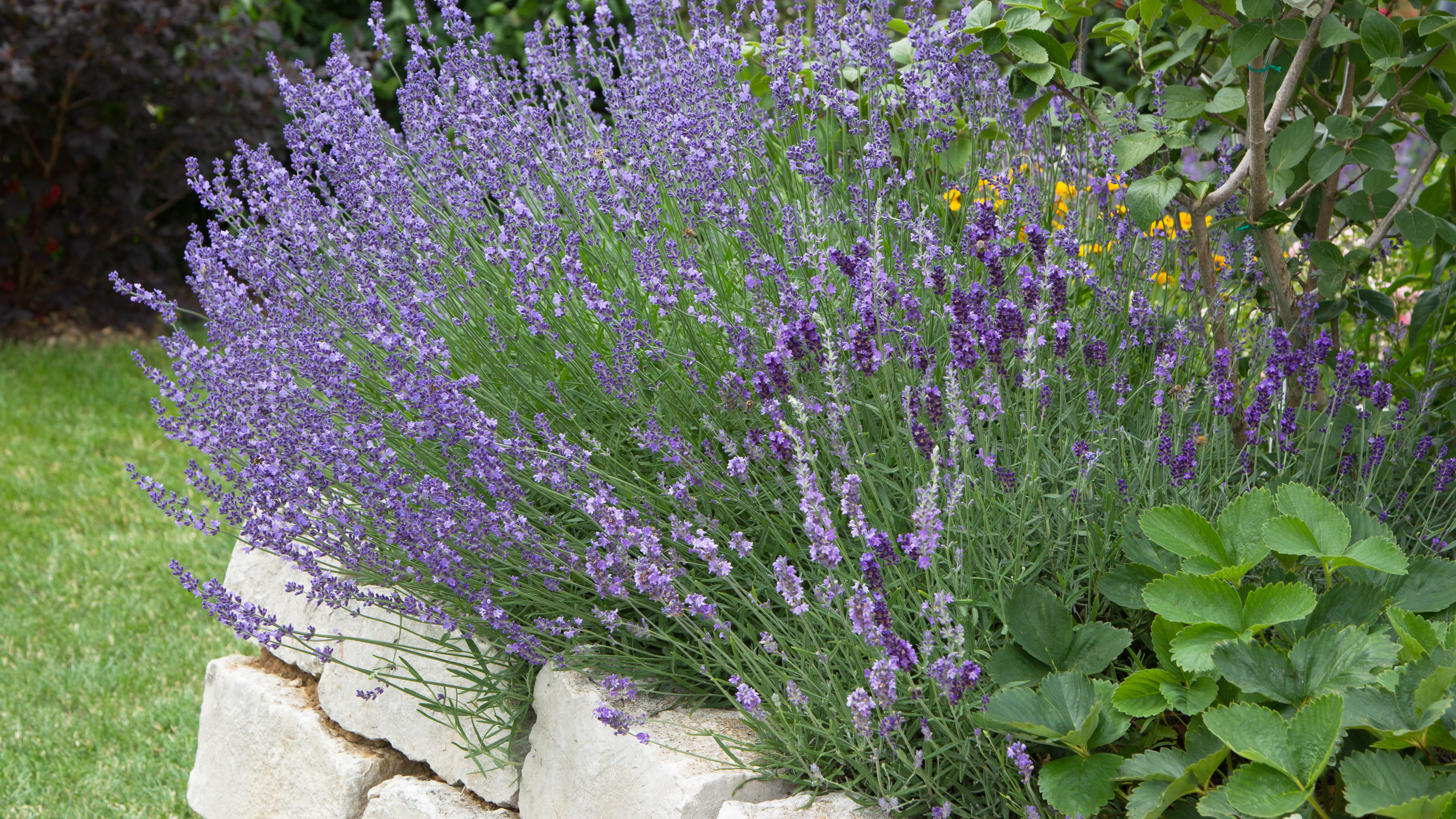
Beloved for its soothing scent and pretty purple flowers, Lavender is a favorite choice of many gardeners before you even consider its growing conditions. It can be grown directly in a rock garden or herb garden, placed in a pot or used as a border or low hedge; the upright way it grows makes it an orderly and thick barrier.
Like other rock-loving plants, Lavender prefers good drainage, lots of sun and slightly infertile soil, so don’t worry about fertilizing. The aromatic flowers can be collected, dried and used for aromatherapy needs, or just left to be enjoyed in the garden. They’re also known to attract pollinators, so growing Lavender is a great way to attract more bees and butterflies to your garden.
4. Blue Fescue
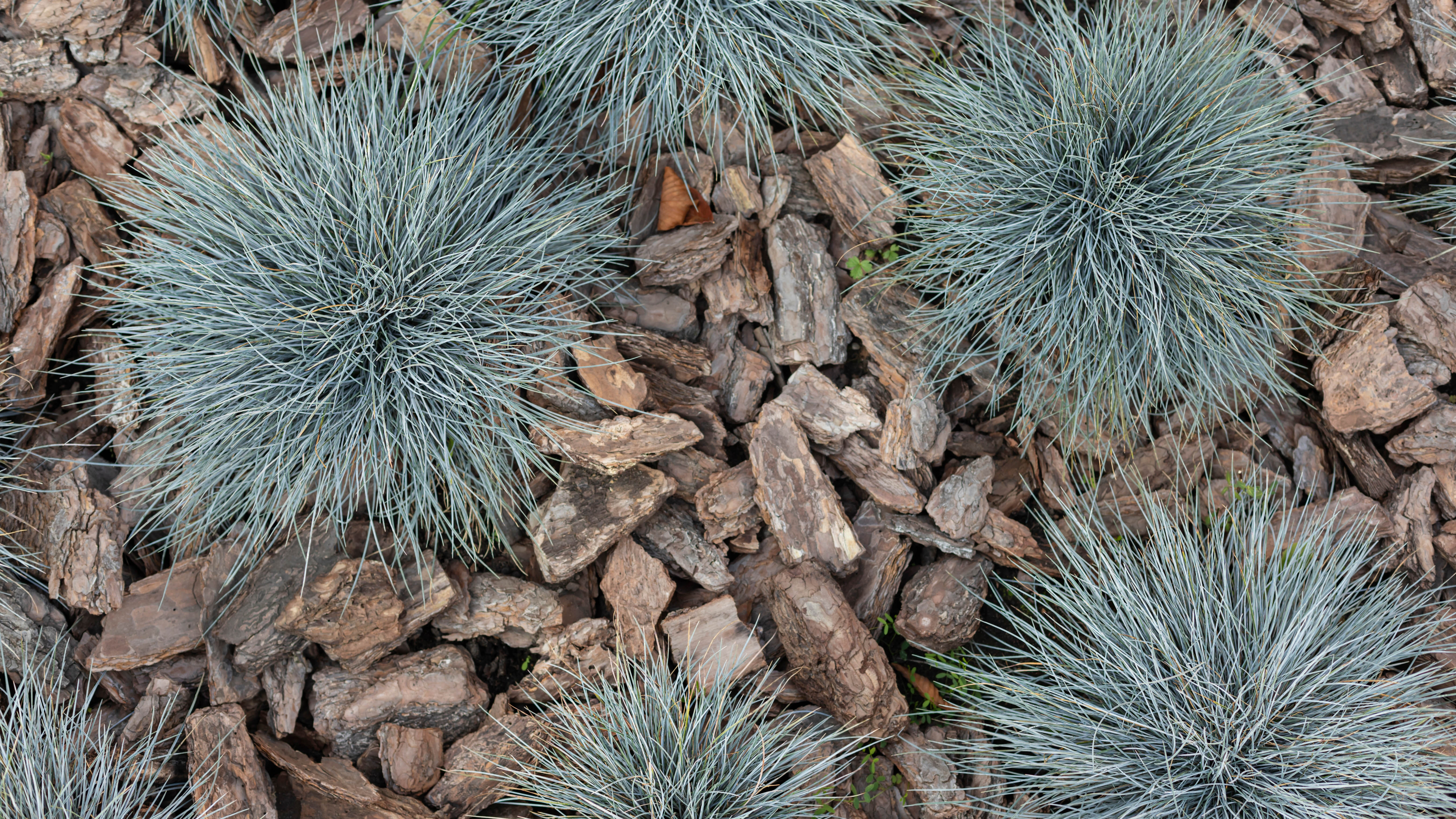
In addition to flowering plants, it’s important to consider how the garden looks year-round and include some other kinds of vegetation. Blue Fescue is an attractive kind of ornamental grass, so-called for the silvery-blue tint to its foliage. The grass is dense and grows in a fun tufted shape, reaching about a foot in diameter. This makes it useful for providing texture and filling up space with something visually different, without dominating the rock garden.
Blue Fescue does produce its own yellowish flowers each year too, but its main draw is its spiky silhouette and long, blue fronds. It prefers lots of direct sunlight but can handle a bit of shade too, making it a reliable choice in tricky conditions.
5. Yarrow
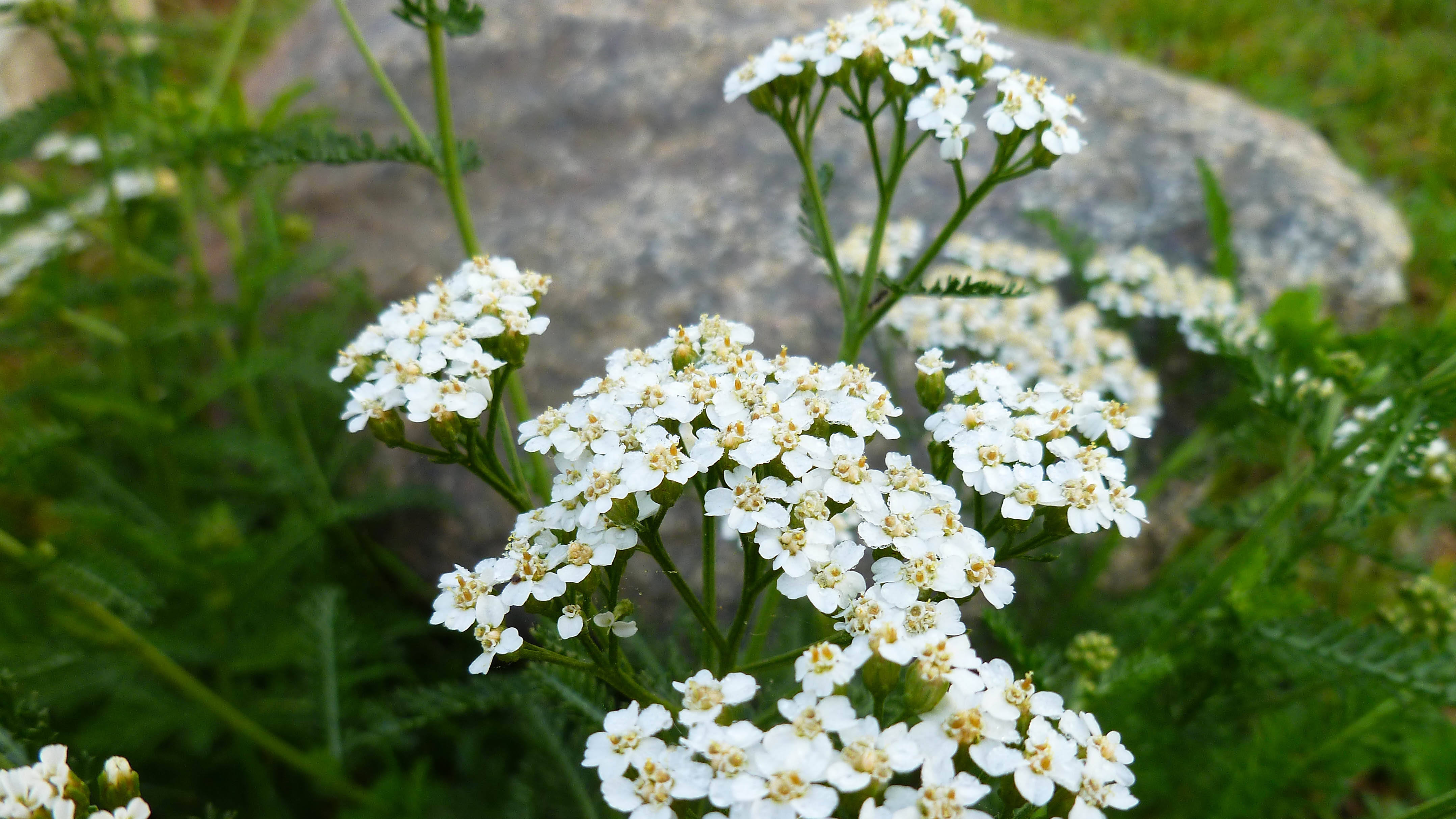
If you’re looking for some height variation in your rock garden, Yarrow (or Achillea) is a great flowering option. Once famously valued for its medicinal properties, Yarrow is now popular for its low maintenance needs and attractive flowers. It doesn’t require rocky soil to grow, but it prefers full sun and well-draining, dry soil and does surprisingly well in a gravel or pebbly environment. It caps its slim, leggy stems with large clusters of tiny packed flowers, which can be yellow, red, white or pink in color.
While a lot of rock plants grow close to the ground, this species can reach between two and four feet tall and is well-suited to grow along fencing or other border structures, or be used as visual variation within a garden. One thing to consider is that it is known to spread quite quickly, so it may be best to contain it within the broader garden.
6. Candytuft
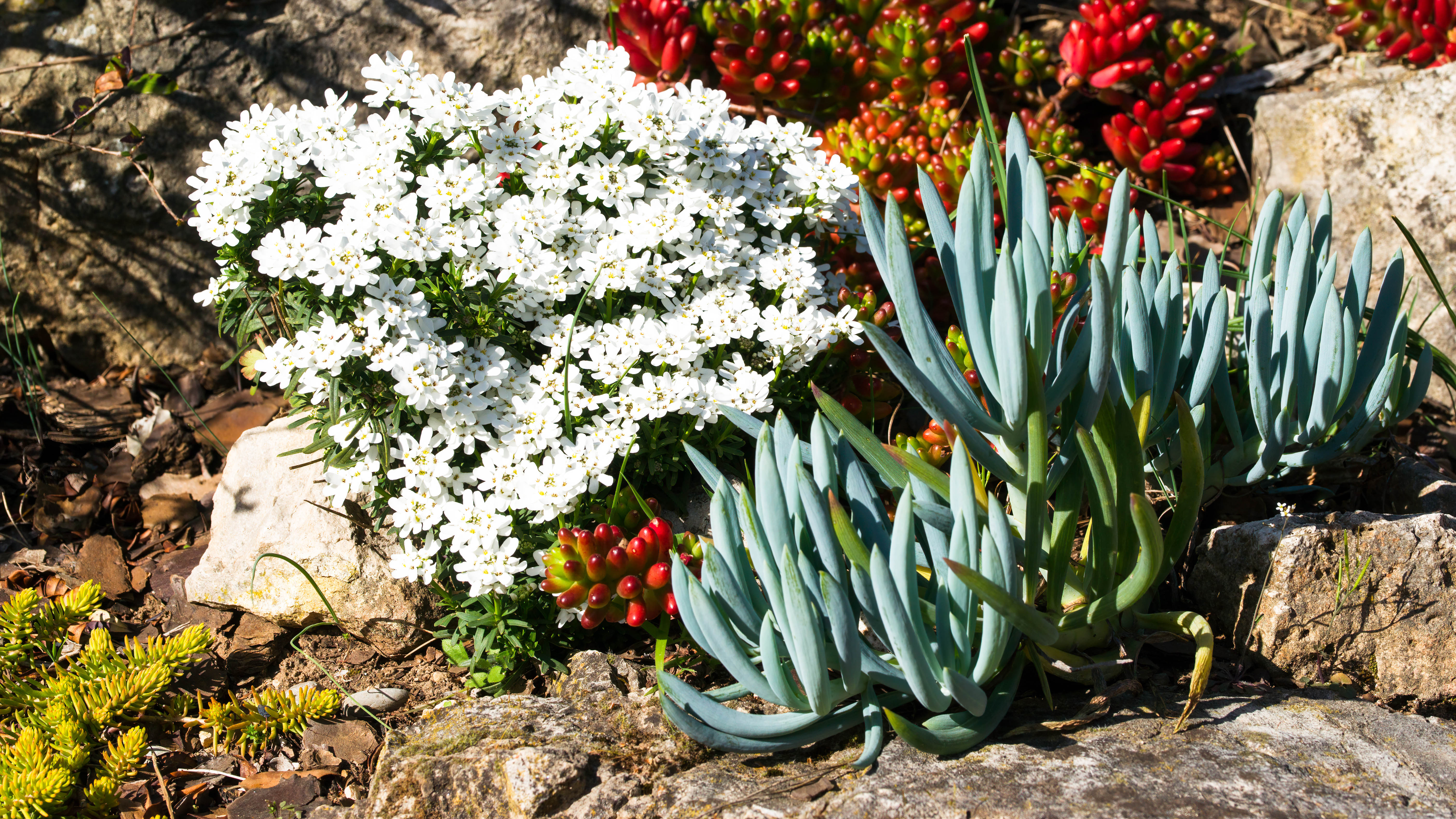
Candytuft has a cute name and an equally cute appearance, with a rich carpet of white flowers on top of dark green foliage. It blooms early in the year, around mid-spring, which creates visual interest when the rest of your garden may be weeks away from flowering. Over time, the white flowers fade to a soft pink color, giving it another lease of life. Then, once the flowers have finished blooming, the plant is left with its deeply colored evergreen foliage throughout the winter time.
As with other rock-suitable plants, Candytuft is a hardy, drought-resistant plant that requires minimal care and can even handle some shade. While it can be known to release a slightly unpleasant aroma, it is a great addition to a rock garden for anyone wanting to add more flowers throughout the year.
7. Creeping Phlox

Also known as Phlox Subulata, Creeping Phlox is another plant that is prized for its early-spring flowering – it can transform any garden from dull and gray to vibrant and blooming. Like the Candytuft, it also features deep green foliage that stays that way year-round, although these leaves are needle-like in appearance.
Creeping Phlox prefers dry, fast-draining, poor-quality soil and so is perfectly suited to rocky terrain, despite its lush appearance. Flowers come in a range of pink, purple, blue or bicolor hues and are likely to carpet the ground; while the plant only grows a few inches in height, it does spread (or creep) along paths, across walls or down slopes. It can root into narrow crevices, making it a popular choice to decorate stone walls.
8. Basket of Gold
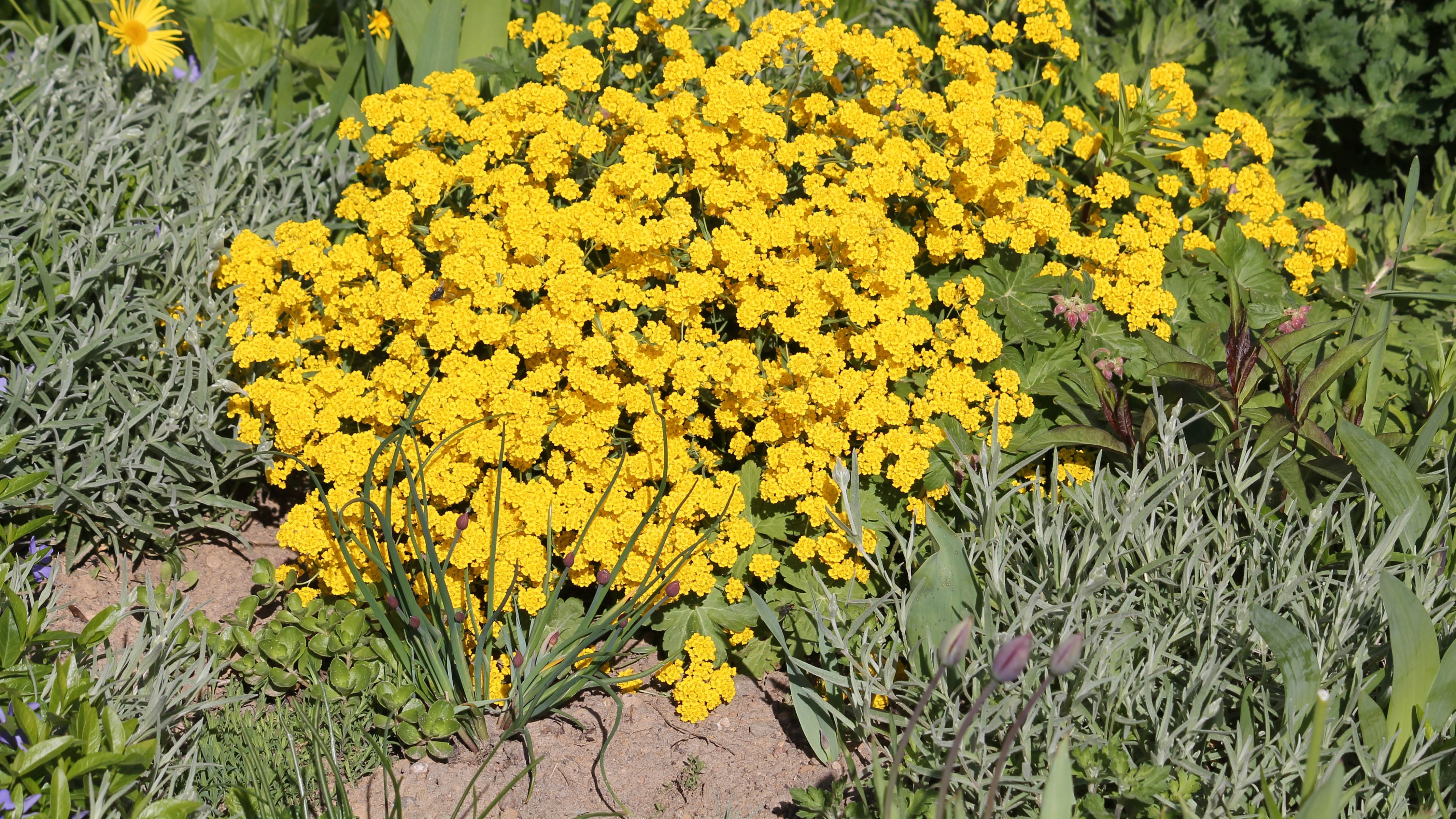
It should be no surprise that a plant with the common name Basket of Gold features bountiful sprays of yellow and gold flowers. Also known as Yellow Alyssum, Basket of Gold flowers in the spring with densely packed clusters of blooms that reach about a foot in height.
Its vibrant, happy color makes a great contrast to the grays and browns of rocks and stones, especially when it grows tucked inside nooks and crannies. It enjoys sunlight, well-draining soil and is considered drought-tolerant, if not drought-resistant. In warmer weather, this perennial plant may only survive for a year or two and so it may need to be replanted; cooler regions should enjoy its yellow blooms for longer.
9. Irish Moss

Unlike the other plants on this list, Irish Moss is both a plant that loves rocky terrain and loves moisture. If you live in a wet yet stony environment, such as the Pacific Northwest, then it can be very challenging to find plants that will thrive without a lot of rich soil. This is where Irish Moss can come into its own, growing into a thick, verdant carpet that can support human foot traffic.
It’s soft to the touch and produces white flowers in the spring that are reminiscent of stars. It can survive in lower light levels than most of the full-sun dependent plants on this list, which is another boon for those wetter, cooler climates. Irish Moss can also make a great companion plant to Blue Star Creeper, another perennial that forms a low-lying mat but one covered in tiny blue flowers.
More from Tom's Guide
- 7 best plants to grow in clay soil
- Check out these best plants to grow on a wall
- These 9 best plants grow back every year

Despite making her home in urban metropolises, Madeleine Streets has been nurturing a green thumb for decades.
Raised by a garden designer, she is putting that childhood education to use by helping others learn how to make their garden bloom, while filling her own New York home with cat-friendly plants.
When not writing about gardening and the outdoors, Madeleine loves to cook, study wine and borrow books from her local library.
